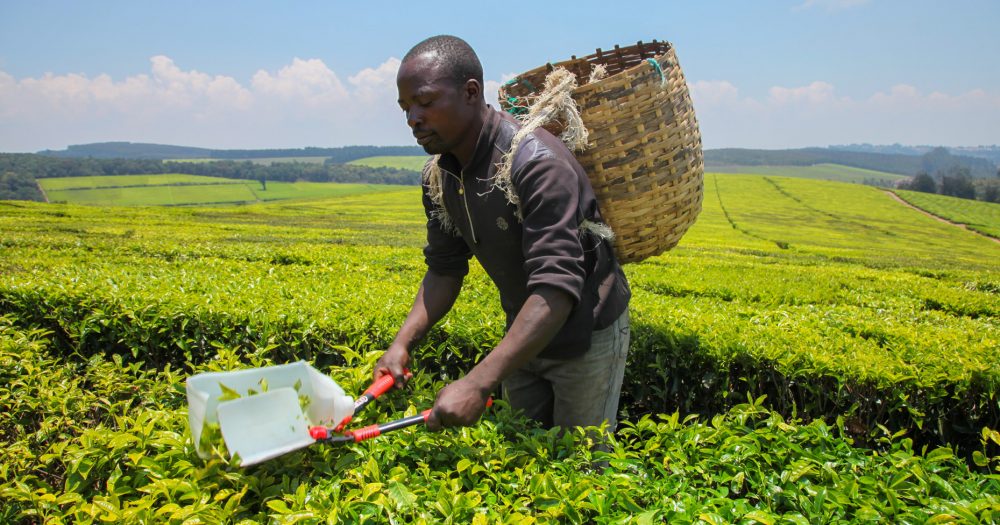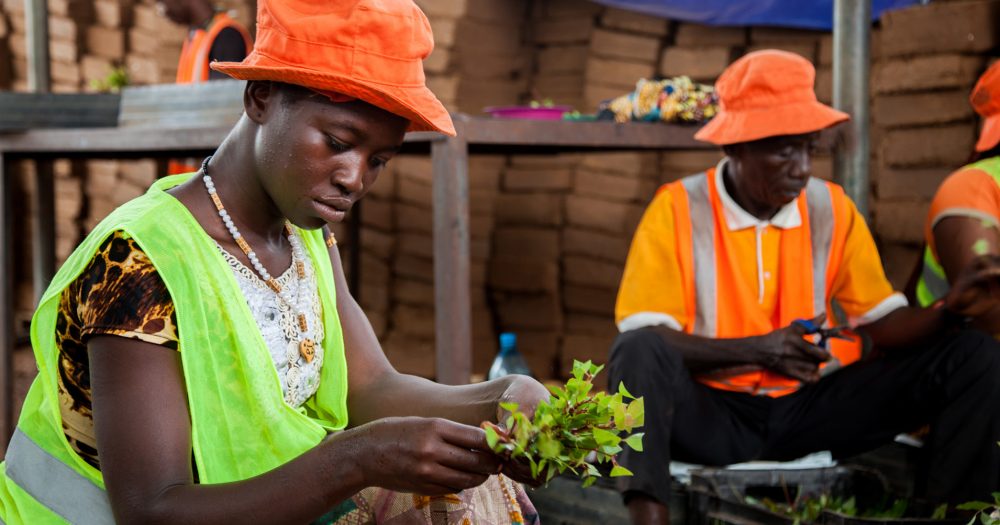Our investment
Description of the investment.
Description of the investment.
Through the launch of Growth Investment Partners (GIP) Ghana, we aim to provide long-term flexible capital, primarily in local currency, to small and medium-sized enterprises (SMEs) in the West African country. The goal is to boost business growth and well-being, create jobs, and deepen SME contribution to the Ghanaian economy. GIP aims to establish itself as a new alternative investment option for long-term capital from local institutional investors in Ghana, driving innovation amongst other financial institutions.
Impact information
Applies to investments made from 2019 onwards. The tabs in this section define what we expect to achieve through the investment, assessing the potential impact of the investment against six dimensions of impact. You can find more details on our methodology of assessing impact here.
Applies to investments made from 2019 onwards. The tabs in this section define what we expect to achieve through the investment, assessing the potential impact of the investment against six dimensions of impact. You can find more details on our methodology of assessing impact here.
What?
| Impact |
|---|
|
|
|
How?
| Primary | Secondary |
|---|---|
|
|
Who?
| Stakeholder | Geography | Characteristics |
|---|---|---|
| Employees |
Ghana, possibly beyond |
The socio-economic characteristics of firm employees, suppliers, and consumers is difficult to establish ex-ante. GIP management has already identified (local) third-party investors which may respond to GIP success over time. GIP will initially target medium-sized firms (50-300 staff) to prove the viability of the new vehicle and its products. Thereafter, GIP may target selected, high performing smaller firms (15-49 staff). GIP will adopt an initial sector agnostic approach, but agriculture, healthcare and retail are the top three industries in the initial GIP pipeline. |
| Suppliers |
Ghana, possibly beyond |
|
| Customers |
Ghana, possibly beyond |
How much?
| Scale | Depth/Duration |
|---|---|
|
Initial discussions have indicated third-party appetite to invest in GIP. GIP will provide capital to SMEs of $500k – $5m, equivalent in local currency, and it will support up to 150 Ghanaian SMEs within the next 15 years. |
New investors are expected to come in towards the end of 2024, enabling impacts beyond year 15. We expect replication and competition effects amongst other financial institutions could begin from year 3 - 8, while impacts on SMEs will be generated from year 1. |
Contribution/additionality
| Contribution/additionality |
|---|
|
Risk
Execution RiskThe management team has highly relevant expertise and experience but the creation of a platform with new products (especially during a macroeconomic downturn) presents a series of strategic and operational risks. This will be mitigated by detailed design, a quality management team, and tranched funding. Alignment RiskAny alignment risk is mitigated by linking the management team’s long term incentive plan to key impact performance indicators, alongside implementing proper governance controls and having advocacy support in place. Evidence RiskFirm and underlying stakeholder-level impacts are difficult to determine ex-ante. This will be mitigated through monitoring and follow-up surveys. |
Impact score
|
Impact score (at point of investment)
The Impact Score is a tool to help us manage our performance against our strategic impact objectives. It is designed to incentivise investments that support our productive, sustainable, and inclusive objectives. You can find out more here. The Impact Score is published for investments made from 2022 onwards. The Impact Scores are calculated at the point of investment. We publish the Impact Scores of new investments annually, once the information has been externally assured by an independent third party. |
|---|
7 |
Environmental and social information
-
Environmental and social summary
A high-level description of the environmental and social aspects of the investment. This may include a summary of key environmental and social risks identified during environmental and social due diligence (ESDD); key elements of an environmental and social action plan (ESAP); or ways in which we plan to support the investee improve environmental and social standards, such as through their environmental and social management system (ESMS); as well as any other priority areas agreed with the investee.
-
Environmental and social risk
A risk category rating, which indicates the level of environmental and social risk associated with an investment. For an explanation of the categorisations used, see here. We consistently provide an environmental and social risk category for all investments screened from 2023 onwards.
Environmental and social summary
We are working with GIP on developing its environmental and social risk management processes and capacity. This includes the development of an ESMS, as well as HR, safeguarding and supply chain processes. We have also established an ESG Impact Committee to ensure GIP adopts, implements, and manages environmental and social practices in accordance with BII’s requirements.
Environmental and social risk
Medium-Low
Reporting and Complaints Mechanism
The Reporting and Complaints Mechanism allows anyone outside BII to report alleged breaches of the business integrity or environmental and social provisions of BII’s Policy on Responsible Investing. This includes breaches made by BII, a BII investee, or a portfolio company of a fund in which BII has invested. The Reporting and Complaints Mechanism Rules are available here. Reports and complaints can be submitted by email to reportsandcomplaints@bii.co.uk or by mail. See more details on our Reporting and Complaints Mechanism here.
For any other general enquiries contact us at enquiries@bii.co.uk
-
Key facts
- First published
:
When the investment was first published on the website database.
- January 2024
- Last updated
:
When the last quarterly update of the website database occurred.
- June 2024
- Project number
:
An identifier number shared by investments in the same project.
- D4995
- Status
:
The current status of the investment (green flag for active and red flag for exited).
- Active
- Region
:
The geographical region where the country is located. We currently invest in Africa, South Asia, South East Asia and the Caribbean. In 2023, BII’s investment mandate was extended allowing it to invest in regional funds linked to Ukraine, with the majority of activity expected to begin post-war. Investments outside these regions were made prior to 2012 under previous investment mandates.
- West Africa
- Country
:
The countries where the investment delivers impact. Where impact is delivered in multiple countries, this is indicated.
- Ghana
- Sector
:
We prioritise those sectors that facilitate development and need our capital the most. Our priority sectors contribute towards many of the Sustainable Development Goals. They range from investing in the power infrastructure that will provide people with better access to electricity, to investing in financial institutions that direct capital to the individuals and businesses that need it the most.
- Financial services
- Investment type :
- Equity
- Start date :
- July 2023
- Amount :
- $49m
- Currency of investment :
- USD
- Domicile
:
The company or investment fund’s place of incorporation.
- Ghana
We provide capital in the following ways: directly – through direct equity, direct debt, guarantees and other non-intermediated financial instruments; and indirectly – principally through investment funds.
For direct investments and fund investments, this is the date BII committed capital to the investments. This is typically the date on which legal agreements are signed by all parties.
For the portfolio companies of our fund investments, this is the date (either the month or the quarter) on which the fund committed capital to the portfolio company.
For direct equity investments, this is the date at which British International Investment exited the investment.
For debt investments, this is the date at which the final debt repayment was made.
For funds, this is the date at which the fund was terminated.
For underlying fund investments, this is the date at which the fund manager exited the investment.
The total amount committed, per financial instrument, per investment, on the date BII becomes subject to a binding legal obligation to provide funding or assume a contingent liability. This information is provided in US dollars.
For direct investments, this is the amount that BII has committed to the business or project. For fund investments, this is the amount BII has committed to the fund.
The currency in which the investment was made.
- 2X Gender Finance
:
Indicates whether the investment is ‘2X qualified’ using the 2X Challenge criteria. You can find out more here. It only applies to investments made from 2018 onwards, when the 2X Challenge was first launched.
- Fully qualified
- First published
Related investments made by BII into this company:
| Investment name | Commitment | Region | Sector | Start date | Status |
|---|---|---|---|---|---|
| Investment 01 | $500k | West Africa | Financial services | August 2022 | Active |
| Investment 02 | $500k | West AfricaWest Africa | Financial services | August 2022 | Active |
| Investment 04 | $49m | West AfricaWest AfricaWest Africa | Financial services | July 2023 | Active |


